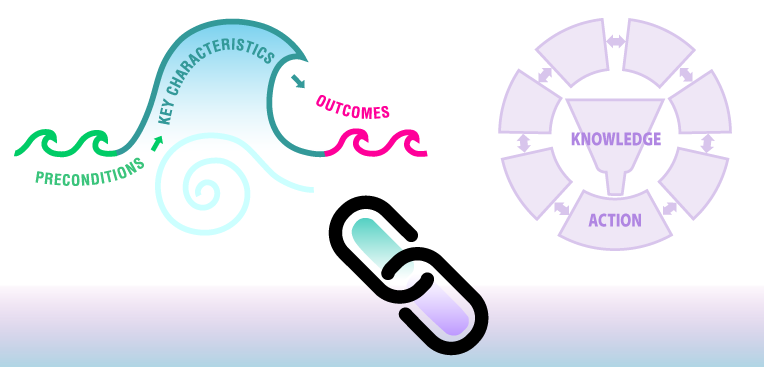
Linking this key characteristic to other elements of the Social Movement Action Framework:
Each of the elements of the Social Movement Action (SMA) Framework is dynamic and interrelated. For example, change agents, as emerging leaders, define the shared concern or desired change and the urgent need for action with the input of colleagues and others. They use framing to develop strategic messaging to highlight the social movement, including a shared concern or strongly desired change, vision and goals. Change agents are committed to the social movement because it aligns with their values and beliefs thus engaging their intrinsic motivation. They are actively involved in individual and collective action; these experiences foster the development of a collective identity.
Linking this key characteristic to the action cycle phases of the Knowledge-to-Action Framework:
You and your change team’s capacity in social movement actions may be enhanced and/or accelerated by the addition of some of the action cycle phases of the Knowledge-to-Action (KTA) Framework, as the two frameworks are complementary. In addition to the two linking examples described earlier in this section, there can be many other points of connection between the two frameworks. Below are two more examples for your consideration:
- Adapt knowledge to local context: As the social movement evolves, change agents may notice that informal and formal leaders are emerging. These leaders may reside in a variety of contexts, be in different roles, and have access to various resources. You can assess the local context in which these leaders are found, the stakeholders they influence, and the resources they can leverage for the social movement. This assessment can help these informal and formal leaders to strategically navigate their local context and can maximize their impact.
- Sustain knowledge use: Determining whether the change is sustained over time can give emerging change agents a sense of whether there is continued leadership and involvement in the social movement. Once the change is achieved in your setting, do change agents remain as peer influencers and opinion leaders or is there a shift in their credibility, status, and connections? If the change is not being sustained and change agents no longer hold the same commitment levels or create the same impact as they did before, it may be necessary to revisit roles and responsibilities.
For more discussion of the dynamic links between the elements of the SMA Framework to one another and to the KTA Framework, see the section "Accelerate your success with the Leading Change Toolkit™"
